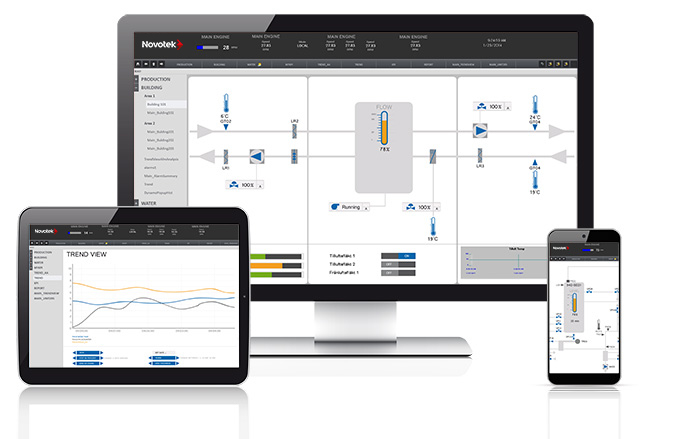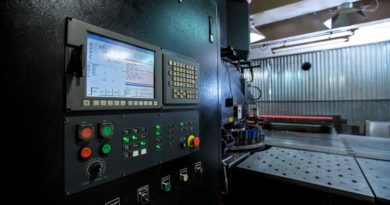Out-of-the-Box Solution Templates Offer More Than Meets The Eye.
Industries such as food and beverage manufacturing and consumer packaged goods (CPG) production are fast-moving environments, with high traceability and proof-of-quality requirements alongside throughput demands. As such, automation offers a lot of benefits to operations — so changes to existing systems, or implementing new ones can be seen as a source of risk, rather than opportunity. Here, Sam Kirby, a Solutions Engineer for Novotek UK & Ireland, looks at how manufacturers in the food, beverage and CPG sectors can reliably and rapidly extend automation deployments.

The food and beverage industry has a long history with automated systems. In fact, one of the first fully automated production processes was that of an automatic flour mill, in 1785. The industry has generally kept abreast of automation developments since then, allowing it to keep ahead of ever-growing demand. Similar is true of CPG production, particularly in recent years, as product innovation has become a key business strategy.
CPG and food and beverage production tend towards automation because, in both sectors, much of the workforce is at the field level. As such, connecting systems to gain greater visibility into equipment health, output performance and product quality is invaluable. This is nothing new; engineers have been undertaking such projects for years, In particular, firms in these sectors have firmly established the benefits of connectivity and supervisory control and data acquisition (SCADA) systems.
However, the fast-moving nature of product development, with knock-on effects on operations means that systems are evolved in place – the goal is to undertake minimal technical work to allow for product and process changes without compromising the overall setup. There is an additional complication in that, due to the complexity of many production lines, the human-machine interfaces (HMIs) are often densely packed with information — much of which is seldom necessary for an operator’s day-to-day operations, but may be useful to maintenance and engineering staff. As small changes and additions build around the initial core, the firm can feel that the know-how captured in the system can’t be risked/lost so even as core technology upgrades are rolled out, the applications that have been developed end up reflecting that gradual evolution in place. And that evolution may mean: that the capabilities of the core product are underused and that legacy development tools and security methods have been preserved long past their use-by date – this is explored more deeply in our article on technology strategy here.
In recent years, we’ve seen automation software providers work to address some of these challenges. Modern SCADA software can come with preset templates that are configured toreflect the common assets, process and related key data models for specific industry applications, such as pasteurising in a dairy plant or packaging in CPG environments. Such presets can reduce the setup time for most engineers, but beyond that, the templates provided by vendors can also offer a quick start on adopting more modern development tools, and best practices for structuring an application. With that in mind, such templates can provide time savings on basic building blocks for a new/refreshed system that in turn “give back” the time needed to migrate any unique code/intellectual property into the more modern platform.
Even with this leg-up on the application “plumbing”, many SCADA system still suffer from cluttered HMIs, and the vendor provided templates are intended to help address that as well.
“Efficient HMI” Concept – being delivered by GE Digital.

Experience serving the industrial sector has shown that in the most productive environments, SCADA systems present screen to operators that are easy to interpret. By having the operator’s work foremost in screen design, they can be up to 40% more effective in spotting issue that require technical teams to resolve. Engineers can then respond faster to events on the production line. GE Digital has been delivering templates intended to support this “Efficient HMI” concept as part of their IFIX HMI/SCADA system.
The templates, refine HMI displays to focus on the most critical information related to executing the work. This decluttered interface improves operator effectiveness in regular operation, and makes it easier to spot issues exceptions, with means improved situational awareness, and more focused reactions to such issues. The overall effect is a higher level of productivity, on measures such as machine utilisation, throughput and quality.
Following this approach, IFIX also features preconfigured sample systems that are aimed at elements of the food, beverage and CPG industries. For example, Novotek can supply the IFIX software with a preset tailored for juice plants, with a display that provides an overview of processes from raw material intake to filling and packaging. Beverage production engineers can run this system immediately following installation to gain an immediate assessment of how production is performing. Even where adaptation is needed, the templates provide working examples of both the efficient look-and-feel, and of the most modern approaches to the technical configuration underneath it all. So engineers and IT teams get a practical hand in furthering their technical knowledge, smoothing the adoption of new versions and related modern development tools.
It’s not unusual for engineers to believe that preset templates might not adequately fit their unique operations, yet we’ve found that the preconfigured settings often provide a substantial benefit. Of course there is no substitute for testing this directly, which is why Novotek and GE Digital offer CPG companies and food and beverage manufacturers a free demo of IFIX to see how effectively the templates suit them.
Automation may not necessarily be something new for the food, beverage and CPG sectors, but its continued evolution brings with it new implementation challenges and operational complexities. Novotek values the work by GE Digital on the Efficient HMI concept and application templates as they offer useful tools to customers to help them modernise quickly and safely. And by sharing the methods and example applications, the customer’s IT and engineering groups are given a helping hand in building a bridge from the technical realities of long-established SCADA systems to a more modern solution.



